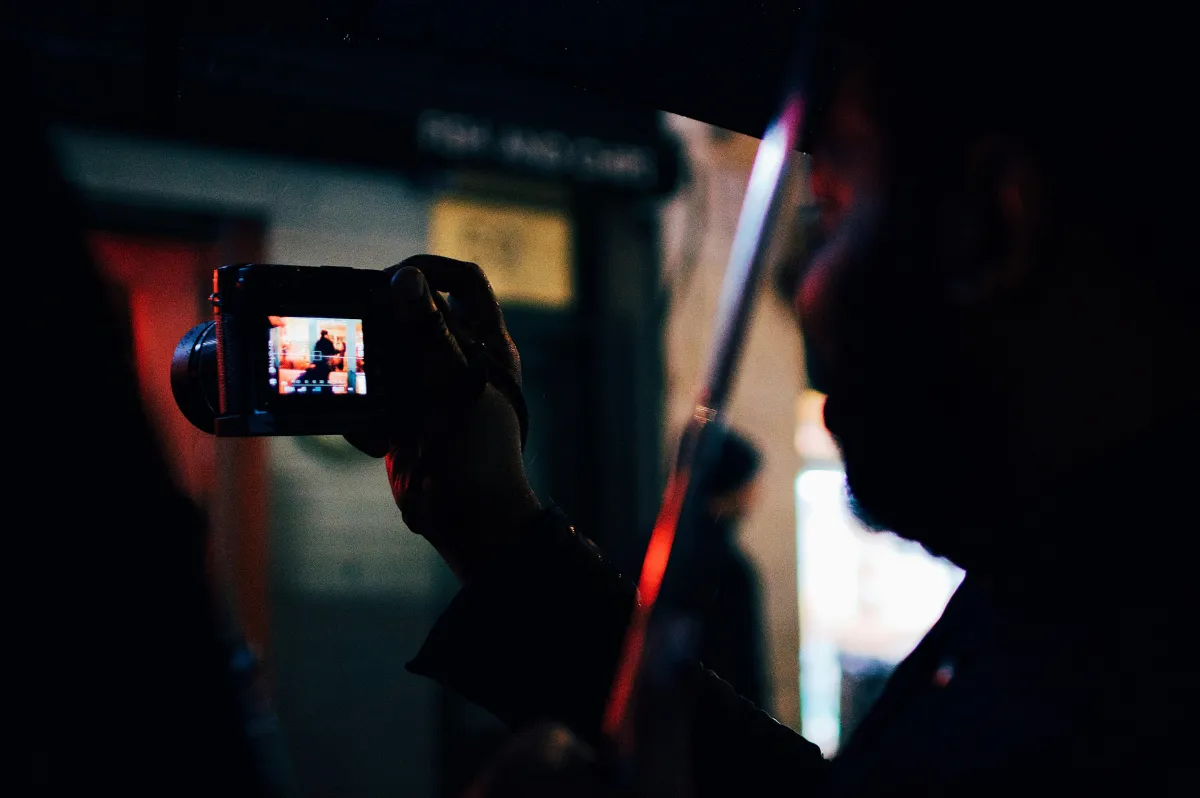FFA BLOG

7 Ways to use vertical video social media platforms to fund your film
Here's the reality: if you want to get your film financed today, people need to see there's already interest. Funders, investors, and collaborators want proof that there's a built-in audience. They want to know the fire's already burning. It's just like in the music industry: record labels look for artists who've already built a buzz and proven they can attract an audience. The same thing's happening in film now. Filmmakers who've cultivated a following or built anticipation around their IP find it much easier to get funding, because people can see there's a guaranteed audience even before the film exists.
Vertical video platforms like TikTok, Instagram Reels, and YouTube Shorts have revolutionized how filmmakers can build that audience, grow a brand, and ultimately fund their film projects. These platforms offer a unique opportunity to showcase your creative vision, engage potential fans, and monetize content, all while leveraging short-form vertical videos that fit seamlessly into modern mobile viewing habits.
Here are seven powerful ways filmmakers can use these platforms to secure funding for their films:
1. Build a Dedicated Audience Through Storytelling and Behind-the-Scenes Content
Short vertical videos allow filmmakers to create authentic, easily digestible content that tells the story of their filmmaking journey. Sharing behind-the-scenes footage, scriptwriting insights, casting moments, or production challenges helps build a loyal community that invests emotionally in your project. This engaged audience can become early supporters and potential backers when you launch fundraising campaigns.
The mindset shift here is crucial: you're already a storyteller. That's what you do. And platforms like TikTok are just another place to tell stories. The creators who thrive there are the ones who understand narrative, emotion, and pacing, exactly what filmmakers do best. The best writer-directors are natural storytellers even off-camera. When they're talking over dinner, they captivate everyone at the table. That same energy, when put in front of a camera, can be magnetic online. Rather than seeing vertical video as "marketing," see it as an extension of your craft: storytelling in a new format, with an audience that could one day fund your next project.
2. Launch Crowdfunding Campaigns with Strategic Promotion
Many indie filmmakers successfully utilize platforms like Kickstarter or Seed&Spark to crowdfund their projects. Vertical video content can be used to create compelling campaign teasers, daily updates, and thank-you messages to maintain momentum throughout the crowdfunding period. Regular short updates keep your audience informed and motivated to contribute.
But here's what actually works: the successful crowdfunding campaigns are those where filmmakers invest time in creating viral, story-driven social content that pulls people into their world. They don't just drop a Kickstarter link and hope for the best. They build trust and connection first. By consistently telling stories and engaging followers, they build a community that's excited to help bring the film to life. When that filmmaker says, "Hey, I'm raising $10,000 for my short film. Let's do it," people are ready to jump in because they already feel part of the story.
3. Monetize Through Platform Creator Funds and Virtual Gifts

TikTok, Instagram, and YouTube all offer monetization options such as creator funds, ad revenue sharing, and live-stream gifts/donations. By consistently publishing engaging vertical videos, filmmakers can generate supplemental income that can be redirected toward film production costs. TikTok's Creator Rewards Program or YouTube Shorts revenue sharing are examples of passive earning opportunities.
4. Partner with Brands for Sponsored Content
As your vertical video presence grows, brands will notice your influence and may partner for sponsored posts or product placements within your content. These paid collaborations can provide a steady funding stream, especially when aligned with relevant film or entertainment products. Instagram Reels is particularly known for this kind of paid partnership.
5. Sell Merchandise and Film-Related Products via Social Commerce
Using integrated shopping features available on Instagram and TikTok, filmmakers can sell branded merchandise including posters, apparel, or digital downloads related to their film. This not only generates funding but also increases fan engagement and film promotion simultaneously.
6. Host Interactive Live Streams with Exclusive Offers
Live streaming on TikTok, Instagram, or YouTube Shorts allows filmmakers to interact directly with fans while sharing exclusive content, limited previews, or special offers (like signed merchandise or premiere tickets). Fans can send virtual gifts or make direct donations during these sessions, turning engagement into financial support.
7. Repurpose Content Across All Platforms for Maximum Reach
Creating vertical videos optimized for one platform can be effortlessly repurposed for the others. This multiplies your exposure without additional filming or editing effort, expanding your audience and funding opportunities across TikTok, Instagram, and YouTube Shorts at once.
Real-World Example: "nothing, except everything." - Wesley Wang
A verified real-world example of using vertical video social platforms to fund a film comes from Wesley Wang, a young filmmaker who uploaded his coming-of-age short film "nothing, except everything." on YouTube Shorts. After receiving limited traditional funding opportunities, Wang turned to sharing his film on YouTube where it went viral, amassing over 1.5 million views.
This massive exposure generated inbound interest for his future projects and helped build social proof that enhanced his ability to attract collaborators and financing for subsequent works. His early projects were funded by smaller means like crowdfunding and recruiting family talent, but it was the platform's viral reach that boosted his profile significantly in the industry.
This example illustrates how vertical video platforms, especially YouTube Shorts, can be instrumental in amplifying indie film visibility and acting as a catalyst for funding and support.
Common Questions and Answers
Q: How long should my vertical videos be to fund my film?
A: TikTok videos can be up to 10 minutes, Instagram Reels up to 90 seconds (or 10 minutes uploaded), and YouTube Shorts up to 60 seconds. For funding purposes, 15-60 second engaging clips tend to perform best for audience retention.
Q: Can I fund an entire film just using TikTok or Instagram Reels?
A: While it's challenging to fund a full-length feature solely through these platforms, many filmmakers use them to build audiences, raise initial budgets, and supplement funding through monetization, brand partnerships, and crowdfunding promotion.
Q: What type of content attracts potential funders on vertical video platforms?
A: Behind-the-scenes looks, project updates, short narrative teasers, personal storytelling, and interactive Q&As attract engagement and build trust, which ultimately encourages followers to support your funding goals.
Q: Are there risks to focusing on vertical platforms for film funding?
A: Vertical content requires a different storytelling style and shorter formats, which may not suit all filmmakers. It's important to balance platform content with long-form storytelling and traditional methods for funding to maximize success.
Q: How do I start monetizing on these platforms?
A: Meet platform eligibility criteria like follower counts, consistency, and community guidelines. Then join creator monetization programs such as TikTok Creator Fund, Instagram's bonus programs, or YouTube Shorts revenue sharing to earn from your content.
Studio 202 | Mainyard Studios | 280 Mare St | London | E8 1HE | UK
+44 7360 268742
www.futurefilmacademy.com

